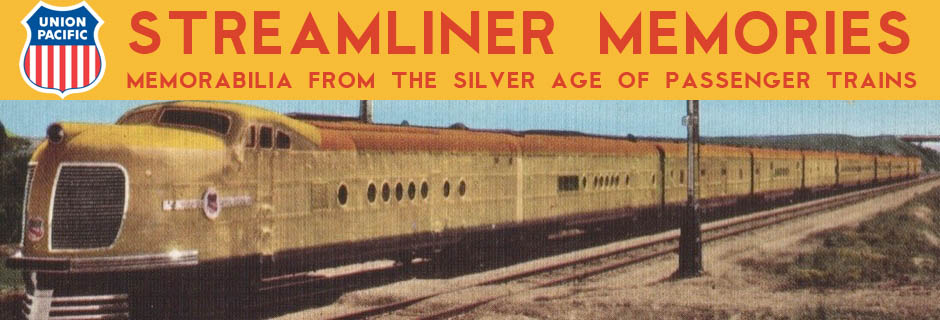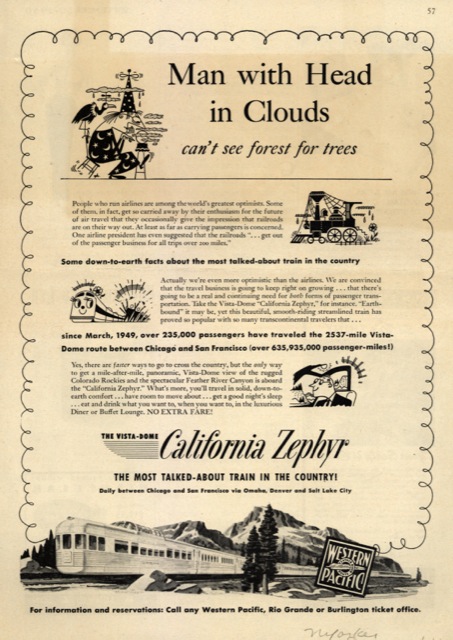I count nine different photo ads–ads dominated by one large photo, usually with one smaller photo–in various issues of National Geographic. The first two were placed by Western Pacific, and the remainder by all three railroads. Click any image for a larger view.

The first photo ad, from the December 1955 issue of Nat Geo, commemorates the making of Cinerama Holiday, the second (of ten) Cinerama films made to be displayed with three different projectors on a very wide screen. This particular film featured the California Zephyr and included footage shot from a dome car whose tinted glass had been replaced by clear glass, as well as through an open door in the front of the locomotive.









